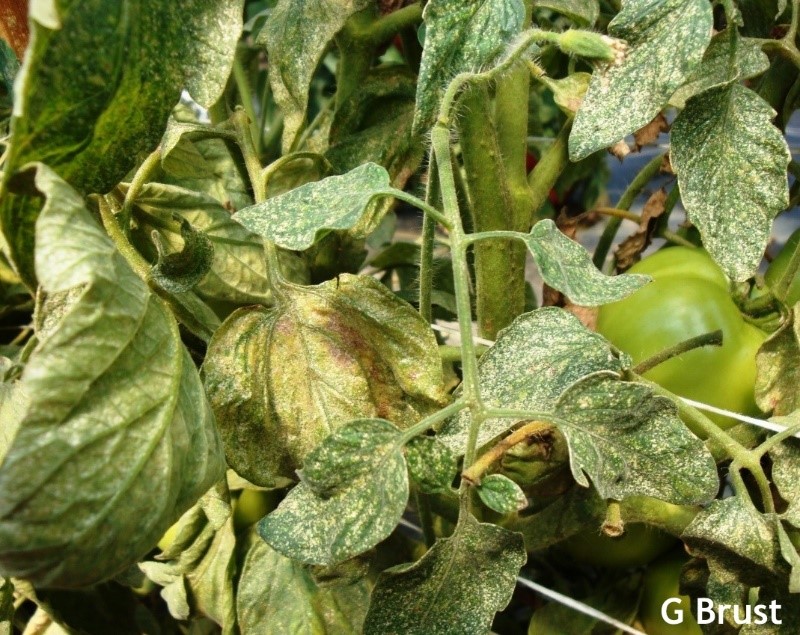Sep 5, 2017Why are twospotted spider mites such problems lately?
This has been an odd season, like most of them I guess, with lots of rain when we normally have drought and cool temperatures when we normally have heat. We have had problems this year with striped cucumber beetles, hornworms, leafhoppers, squash bugs and, surprisingly, with twospotted spider mites, Tetranychus urticae (TSSM). Normally we expect to see heightened problems with this mite come mid-July through August because it is hot and dry and the mite thrives in this environment. But this year we have had much cooler temperatures with heavy rains — all the things that should greatly reduce TSSM populations. But when visiting watermelon or tomato or cucumber, eggplant, you name it fields I have still found spider mites. In some fields the mites are in numbers causing yield reducing injury. This is astounding with the environmental conditions we have had. In other fields the mites are in moderate to low densities, but ready to surge given the opportunity.
TSSMs have been suppressed it seems with miticide sprays but have not been reduced enough that they still aren’t causing some problems. Some growers blame the miticide, but the miticides being used are effective, they just don’t seem to be very effective. There are a few possibilities that may be reducing the effectiveness of the miticides. One possibility is in many fields growers are adding the miticide to their regular spray program for other pests. The regular program includes pyrethroids. Pyrethroids have a wide-spectrum of insect control and are useful when there may be several pests to be controlled such as several worm species, stink bugs, squash bugs, cucumber beetles, etc. But it is not good to put them into a regular weekly spray program as they can exacerbate TSSM, thrips and aphid populations. Save the pyrethroids for when you do face several pests at the same time and use them then. If you really need to have a weekly insecticide spray program try at least to rotate the mode of action (MOA) of the insecticide that is used. Growers who rotate or use insecticides sparingly or use organic insecticides seem to have far fewer problems with TSSMs than growers who use weekly sprays of pyrethroids.
The other possibility is that TSSMs are really a complex of species that are extremely variable in their biology, but are called one species known as the twospotted spider mite. Much controversy exists as to the taxonomic placement of TSSMs, as there are approximately 65 synonyms included under this one species. So it should not be too surprising that we see from time to time outbreaks of this ‘species’ when we would not expect it. Whether there is a shift in the “type” of TSSM we have in our area or not would be difficult to tell for sure. There are other possible explanations as to why TSSMs are a becoming such problems: poor spray coverage, not enough spray pressure or gallonage used, putting the miticide out too late, etc. But these types of problems have always been with us and it has been in just the last 4-5 years that the TSSM has become an increasingly large problem in our vegetable fields that needs to be examined. This is something I hope to do over the next few seasons.
Photo above: Twospotted spider mite yield reducing feeding. Photo: Jerry Brust
– Jerry Brust, IPM Vegetable Specialist, University of Maryland















